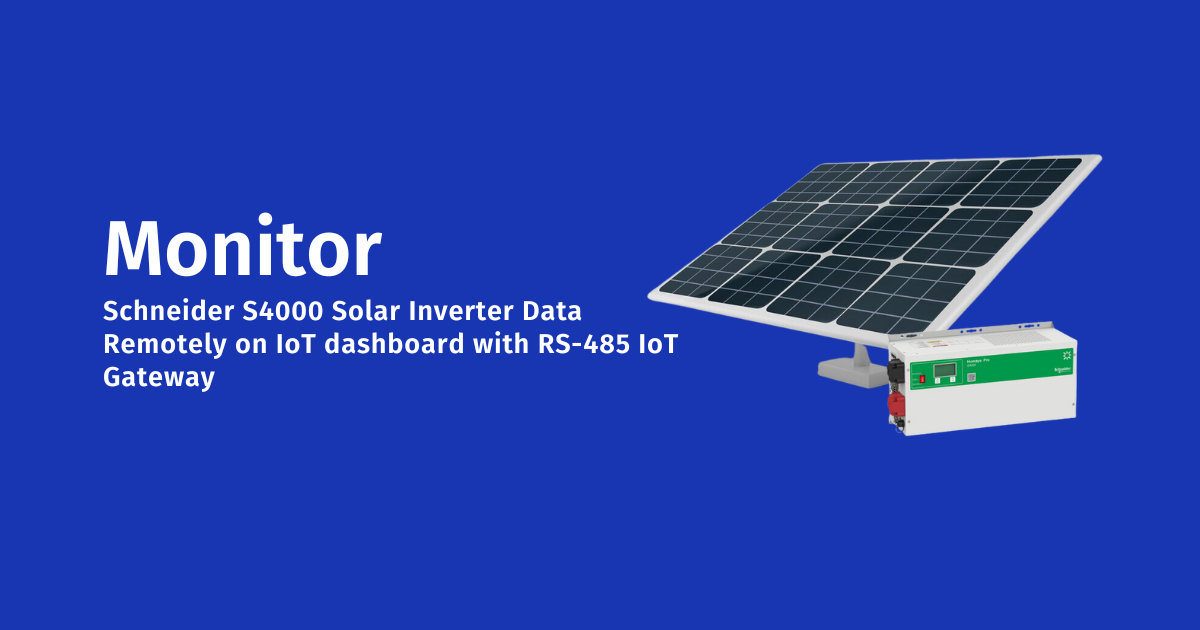The Schneider Electric Homaya Pro S4000 is a 4kW solar off-grid inverter designed for use in homes and businesses that are not connected to the electrical grid. It can convert direct current (DC) electricity from solar panels into usable alternating current (AC) electricity.
The Homaya Pro S4000 inverter has a maximum rated power of 4000 VA. It can be used with battery voltages of 48 V. It is also equipped with several features that make it a versatile and reliable solution for off-grid applications, including:
- Pure sine wave output: This ensures that the inverter produces high-quality AC power that is compatible with a wide range of appliances and electronics.
- Overload and short circuit protection: This helps to protect the inverter from damage in the event of a power surge.
- Battery management system (BMS): The BMS helps to extend the life of your batteries by regulating the charging and discharging process.
- MPPT solar charge controller: The MPPT solar charge controller ensures that your solar panels are operating at their maximum power point, which means that you will get the most out of your solar energy system.
Table of Contents
Integration with RS485 IoT Gateway
The Schneider Electric Homaya Pro S4000 inverter can be integrated with an RS485 IoT gateway to monitor and control your solar energy system remotely.
The RS485 communication protocol is a widely used standard for industrial automation applications. It allows devices to communicate with each other over long distances using a twisted-pair cable.
An RS485 IoT gateway is a device that can connect to multiple devices via RS485 and translate their data into a format that can be understood by the internet.
This allows you to monitor your solar energy system from anywhere in the world using a web browser or mobile app.
The Role of the RS485 IoT Gateway:
The RS485 IoT gateway acts as a bridge between the inverter and the internet. It functions in two key capacities:
- Data Acquisition: The gateway establishes communication with the Homaya Pro S4000 via the RS485 protocol. This allows the gateway to collect a wealth of data points from the inverter, including:
- AC output power
- DC input power
- Battery voltage and current
- State of charge (SOC)
- Solar panel power output
- Ambient temperature
- Inverter status (on/off, fault)
- Data Translation and Transmission: The raw data collected from the inverter is often not directly interpretable by internet-based applications. The RS485 IoT gateway plays a crucial role in translating this data into a format compatible with cloud platforms and user interfaces. This enables seamless transmission of the information to a central server or dashboard.
Integration Considerations:
A successful integration requires considering a few key factors:
- Compatibility: Ensure compatibility between the Homaya Pro S4000 inverter and the chosen RS485 IoT gateway. Both devices should utilize the same communication protocol and data format specifications.
- Distance limitations: While the RS485 protocol supports extended distances using twisted-pair cable, there are limitations. It’s crucial to follow recommended cable length specifications for optimal signal integrity.
Alternative Integration Option: Wi-Fi Connectivity
While the focus of this discussion has been on RS485 integration, it’s important to note that some companies, like Hashstudioz Technologies offer RS485 IoT gateways with Wi-Fi capabilities. This can be a viable alternative for situations where:
- Cable installation is impractical: Wi-Fi eliminates the need for running cables between the inverter and the gateway, simplifying installation, especially for existing systems.
- Shorter distances are involved: For shorter distances, Wi-Fi can offer a reliable and potentially more cost-effective solution compared to RS485 cable installation.

Benefits of Integration:
By integrating the Homaya Pro S4000 with an RS485 IoT gateway, users gain several advantages:
- Real-time System Monitoring: Access a comprehensive dashboard displaying key performance indicators (KPIs) of the solar energy system in real-time. This allows for proactive identification of potential issues and optimization of energy usage.
- Remote Control Capabilities: Depending on the specific capabilities of the chosen RS485 IoT gateway and inverter model, users might be able to control certain aspects of the system remotely. This could include adjusting settings or triggering functionalities.
- Enhanced System Management: Gain valuable insights into historical data to analyze trends and optimize system performance over time. Informed decisions can be made regarding energy consumption patterns and potential system upgrades.
- Improved System Visibility: Remote monitoring provides peace of mind, allowing users to verify system operation and identify any anomalies from any location with an internet connection.

Conclusion:
The integration of a Schneider Electric Homaya Pro S4000 inverter with an RS485 IoT gateway significantly enhances the functionality of off-grid solar energy systems.
Leveraging the capabilities of the RS485 protocol, users can gain valuable insights, optimize system performance, and enjoy the peace of mind of remote monitoring and control. As a reference, companies like Hashstudioz Technologies offer RS485 IoT gateways that can potentially be compatible with the Homaya Pro S4000 inverter.
However, it’s vital to verify compatibility with the specific model and ensure proper configuration for a seamless and successful integration. do not use these words in conclusion delving, dive, empower, unleash, harness, imagine, unlock, empower, and additional complex fancy words.

